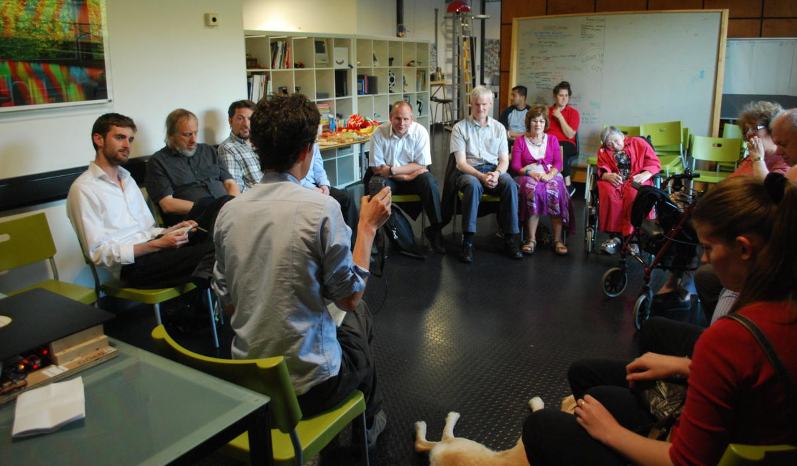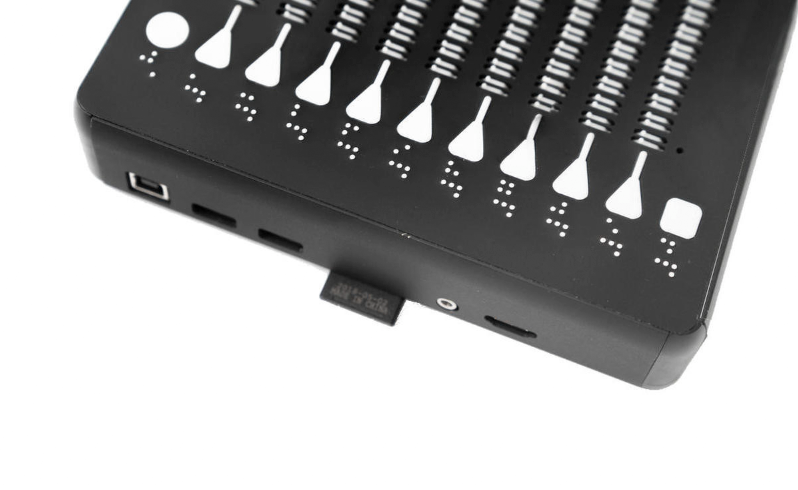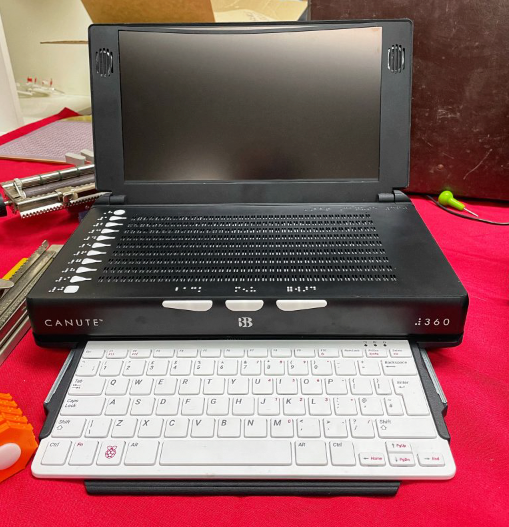Keeping it local
Founder and MD of Bristol Braille Technology Ed Rogers has been working on “refreshable Braille technology” since 2008 and co-invented the Canute multiline Braille display. He is also a co-founder and trustee of the Braillists Foundation, a community of more than 1500 people who help each other with projects to promote Braille use. Ed drew on this community’s expertise when designing the Canute 360 to ensure it would meet their needs and expectations. Having closely followed Raspberry Pi’s success for many years, he was convinced from the outset that it would be the ideal component for the embryonic Braille reader. “We didn’t want to distract ourselves by reinventing the wheel, or having to support our own OS,” so the dedicated OS and thriving Raspberry Pi community were vital factors.
Bristol Braille started with a standalone, “functional” book-reading prototype, says Ed, and the 14 major revisions over an eight-year development cycle each involved Raspberry Pi and Python. The folks at Raspberry Pi loved the concept, and Ed says individuals “bent over backwards” in a bid to ensure Canute made it to market. This is refreshing for a small company working in a supply chain that likes scale. While some components for the Canute are made in places such as China and India, the circuit boards are made by Philtronics in Wales, and the final build is done in-house in Bristol and Exeter. “By taking advantage of the proximity, we are able to be much more hands-on,” says Ed.
Ed describes Raspberry Pi Zero as Canute’s ‘brains’. It runs Raspberry Pi OS, along with the Braille custom user interface. The interface was Bristol Braille’s biggest design hurdle, especially since the final product needed to be relatively affordable. Although it has a £2000 price tag, many are destined for libraries and educational institutes and, thus, will have multiple users.
Raspberry Pi Zero is connected to media ports on the main circuit board, and is able to read the BRF (Braille Ready Files), interpret them as Braille, and send them to an Atmel chip on the main board to convert into dot patterns. Each Braille cell is made up of six dots which can either be up or down. There is virtually no margin for error, and a stuck dot can change the entire meaning of a word.
Incredible touch
Bristol Braille’s Canute 360 has been enthusiastically embraced by the Braillist community, with several hundred already sold. This summer, the team embarked on a roadshow demonstrating the 360 and its successor, the Canute Console. This is based around Raspberry Pi 400, meaning greater processing power as well as an integrated keyboard. A hardware add-on that includes a Canute 360, it adds a BRLTTY screen-reader. Ed says the Console enables them to do “far more exciting things with tactile graphics, using Raspberry Pi 400 to interpret sports matches as tactile animated pitches [and] to draw maps of cities in a top-down GTA 2 fashion.”
This recently launched model has a technical graphics focus, and is aimed at computer science students and those familiar with using Linux or willing to learn it. Every pre-existing multi-line Linux terminal application shows up in digital Braille for the first time. The new device has generated much excitement, with the first pre-orders currently being delivered. Watch the demo video showing a football match replay.




Schreibe einen Kommentar
Du musst angemeldet sein, um einen Kommentar abzugeben.